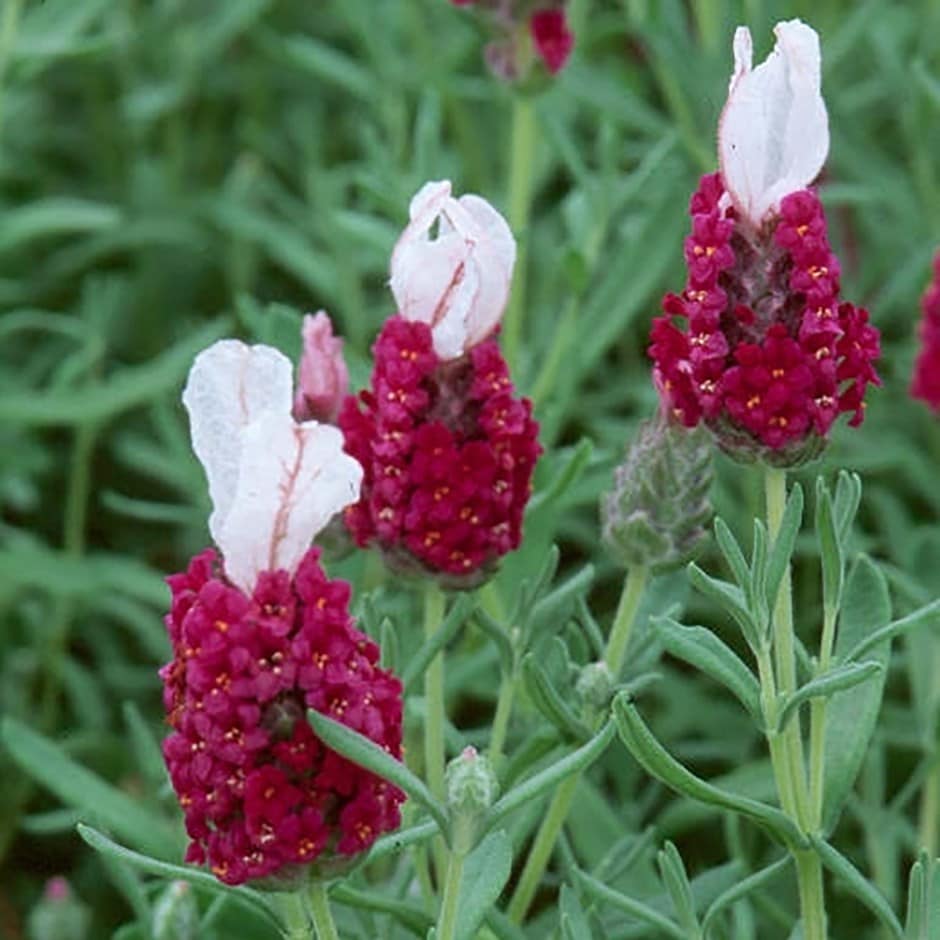Lavandula stoechas subsp. stoechas f. rosea 'Kew Red'
French lavender
- 9cm pot
- £5.59 £7.99
- In stock (shipped within 2-3 working days)
- 3 × 9cm pots
- £13.99 £19.99 £4.66 each
- In stock (shipped within 2-3 working days)
Delivery options
- Standard £5.99
- Position: full sun
- Soil: moderately fertile, well-drained soil
- Rate of growth: average
- Flowering period: June to August
- Hardiness: borderline hardy (may need winter protection
One of the most eye-catching French lavenders, Lavandula stoechas subsp. stoechas f. rosea 'Kew Red' has fulsome flowerheads studded with tiny, bright cerise flowers.
Delicate, pale pink, upright flags emerge from these blooms like butterfly wings and flutter in the breeze. The flowers persist for weeks from late spring above grey-green, aromatic, evergreen foliage. 'Kew Red' looks wonderful planted en masse in a protected, sunny border where its heady fragrance can be enjoyed, or in a container.
Earlier flowering than English lavender, but associates well with them if you want to prolong the season of lavender in your garden. The flower-spikes are also a magnet for bees and other beneficial insects. In frost-prone
Not fully hardy in all UK regions, 'Kew Red' is best grown in a large container and overwintered in a sheltered spot.
Delicate, pale pink, upright flags emerge from these blooms like butterfly wings and flutter in the breeze. The flowers persist for weeks from late spring above grey-green, aromatic, evergreen foliage. 'Kew Red' looks wonderful planted en masse in a protected, sunny border where its heady fragrance can be enjoyed, or in a container.
Earlier flowering than English lavender, but associates well with them if you want to prolong the season of lavender in your garden. The flower-spikes are also a magnet for bees and other beneficial insects. In frost-prone
Not fully hardy in all UK regions, 'Kew Red' is best grown in a large container and overwintered in a sheltered spot.
French lavender thrives in well-drained, alkaline to neutral soil in a sunny, sheltered spot. It’s less hardy than English lavender, so in colder regions, grow it in pots that can be moved to an unheated greenhouse or conservatory over winter.
Water sparingly, as it dislikes soggy roots, especially in winter. After flowering, remove faded flower stems to encourage a neat shape, and in spring (around April), lightly trim back the previous year’s growth, being careful not to cut into old wood, as this may prevent regrowth.
Mulching with gravel rather than organic matter can help keep the base dry and protect the roots from excess moisture.
Water sparingly, as it dislikes soggy roots, especially in winter. After flowering, remove faded flower stems to encourage a neat shape, and in spring (around April), lightly trim back the previous year’s growth, being careful not to cut into old wood, as this may prevent regrowth.
Mulching with gravel rather than organic matter can help keep the base dry and protect the roots from excess moisture.
